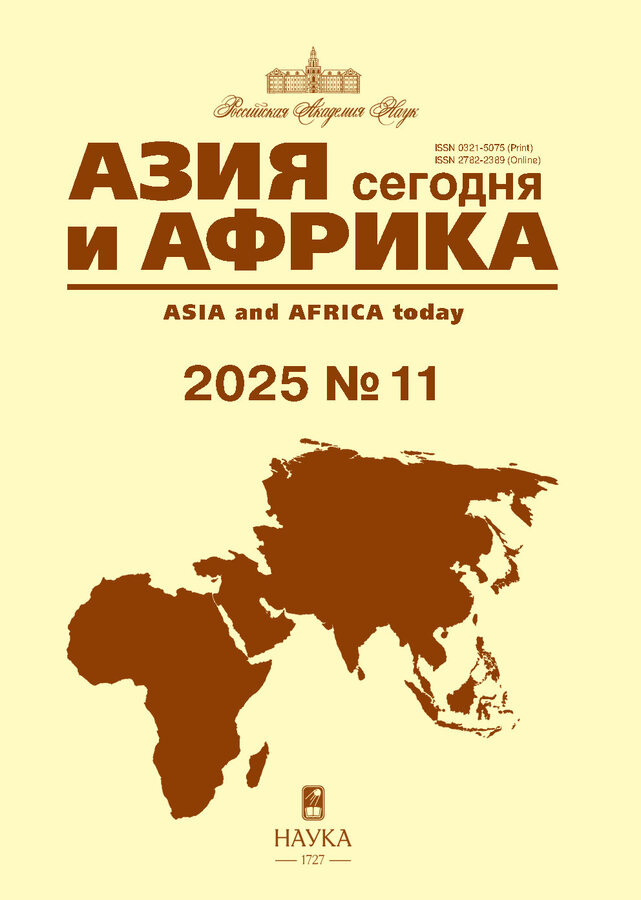Development of Hydrogen Energy in Russia and China: Current Status, Plans and Potential for Cooperation
- Autores: Korneev K.A1
-
Afiliações:
- Institute of China and Contemporary Asia, Russian Academy of Sciences
- Edição: Nº 11 (2025)
- Páginas: 54-63
- Seção: Politics, economics
- URL: https://cardiosomatics.orscience.ru/0321-5075/article/view/696467
- DOI: https://doi.org/10.31857/S0321507525110064
- ID: 696467
Citar
Texto integral
Resumo
In recent years, Russian-Chinese cooperation in the energy sector has demonstrated a sustained positive trend, laying the groundwork for the development of new areas, such as hydrogen energy. Russia possesses rich natural resources and the potential for hydrogen production, while China is the world's largest energy consumer and actively invests in expanding the use of low-carbon energy sources. The article analyzes the development of the hydrogen energy sector in Russia and China and explores the potential for bilateral cooperation against the backdrop of intensifying global trends towards achieving climate (carbon) neutrality, along with the impact of sanctions pressure from the West. Despite existing challenges, a significant increase in the consumption of "clean" hydrogen is projected by 2030, which could help strengthen the positions of both countries in the emerging global market. Special attention is given to the interregional aspect of this cooperation, extended to other BRICS members, which creates unique opportunities for stakeholders from these countries to collaborate on developing and implementing innovative solutions and products.
Palavras-chave
Sobre autores
K. Korneev
Institute of China and Contemporary Asia, Russian Academy of Sciences
Email: korneev@iccaras.ru
ORCID ID: 0000-0003-3930-6309
Senior Researcher, Centre for Japanese Studies Moscow, Russia
Bibliografia
- Саитова А.А., Ильинский А.А., Джемилев Э.Р. Перспективы развития водородной энергетики в Российской Федерации. *Вестник Пермского университета. Серия «Экономика».* 2023. Т. 18. № 4. С. 423–444. doi: 10.17072/1994-9960-2023-4-423-444
- Пономарев-Степной Н.Н. Водородная энергетика рассматривается как одно из стратегических направлений технологического развития России. *Вестник Атомпрома*. 2023. № 7. С. 6–14.
- Huang Y., Zhou Y et al. 2024. Hydrogen Energy Development in China: Potential Assessment and Policy Implications. *International Journal of Hydrogen Energy.* Vol. 49. P. 659–669. doi: 10.1016/j.ijhydene.2023.10.176
- Стоянко Ч. Анализ демонстрационного проекта по производству зеленого водорода в регионе Синьцзяне (КНР). *Экономический вестник ИПУ РАН*. 2024. № 2. С. 46–51. doi: 10.25728/econbull.2024.2.4-xuanshuo
- Pingkuo L., Junqing G. 2024. Comparative Analysis on the Development Potential of Green Hydrogen Industry in China, the United States and the European Union. *International Journal of Hydrogen Energy.* Vol. 84. Pp. 700–717. doi: 10.1016/j.ijhydene.2024.08.298
- Сахаров А.Г. Прогресс стран БРИКС в достижении климатических и экологических целей Повестки 2030. Вестник международных организаций. 2024. Т. 19. № 1. С. 106–128. doi: 10.17323/1996-7845-2024-01-05
- Kakran S., Sidhu A. et al. 2023. Hydrogen Energy in BRICS-US: A Whirl Succeeding Fuel Treasure. Applied Energy. Vol. 334. Pp. 2–29. doi: 10.1016/j.apenergy.2023.120670
- Cal L., Sampene A. et al. 2021. Empirical Analysis of BRICS Countries Pathway Toward Low-Carbon Environment. Research Square. Vol. 1. Pp. 1–19. doi: 10.21203/rs.3.rs-850439/v1
Arquivos suplementares










